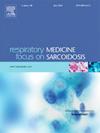Cyclophosphamide is not associated with clinically relevant late pulmonary dysfunction in Dutch survivors of childhood cancer – The DCCSS-LATER 2 PULM sub-study
IF 3.5
3区 医学
Q2 CARDIAC & CARDIOVASCULAR SYSTEMS
引用次数: 0
Abstract
Background
Treatment for childhood cancer may increase the risk of long-term pulmonary complications and dysfunction. Pulmonary surveillance is recommended after established pulmonary toxic exposures, including bleomycin, busulfan, carmustine (BCNU), lomustine (CCNU), radiotherapy to a field exposing the lungs, and pulmonary surgery. However, the role of cyclophosphamide as a pulmonary toxic agent is debated.
Aim
To establish whether cyclophosphamide is associated with late pulmonary dysfunction among survivors of childhood cancer.
Methods
In this multicenter Dutch Childhood Cancer Survivor Study (DCCSS)-LATER 2 PULM sub-study, we included 828 survivors with a median follow-up of 26.6 years, treated with cyclophosphamide and/or established pulmonary toxic treatment, or neither. Pulmonary function tests were used to measure the primary outcomes of diffusion impairment (diffusing capacity for carbon monoxide (DLCO) z-score), restriction (total lung capacity (TLC) z-score), and obstruction (forced expiratory volume in the first second/forced vital capacity (FEV1/FVC) z-score). Secondary outcomes comprised chronic cough, recurrent respiratory tract infections, shortness of breath, and supplemental oxygen need.
Results
Diffusion and restrictive abnormalities were highly prevalent among those treated with established pulmonary toxic treatment, with cyclophosphamide (41.0 % and 50.4 %, respectively) and without (34.3 % and 41.9 %, respectively), and occurred less frequently in survivors treated with cyclophosphamide only (12.9 % and 7.3 %, respectively) or in survivor controls (9.9 % and 12.4 %, respectively). In multivariable analyses, cyclophosphamide did not have a clinically relevant effect on the primary or secondary outcomes.
Conclusions
This study suggests that cyclophosphamide is not associated with clinically relevant pulmonary dysfunction in long-term childhood cancer survivors.
在DCCSS-LATER 2 PULM亚研究中,环磷酰胺与荷兰儿童癌症幸存者临床相关的晚期肺功能障碍无关。
背景:儿童癌症的治疗可能会增加长期肺部并发症和功能障碍的风险。建议在确定肺部毒性暴露后进行肺部监测,包括博来霉素、布苏凡、卡莫司汀(BCNU)、洛莫司汀(CCNU)、暴露肺部的放射治疗和肺部手术。然而,环磷酰胺作为肺毒性物质的作用仍有争议。目的:确定环磷酰胺是否与儿童癌症幸存者晚期肺功能障碍有关。方法:在这项多中心荷兰儿童癌症幸存者研究(DCCSS)-LATER 2 PULM亚研究中,我们纳入了828名幸存者,中位随访26.6年,接受环磷酰胺和/或已建立的肺毒性治疗,或两者均不接受。肺功能试验用于测量弥散损伤(一氧化碳弥散能力(DLCO) z-score)、限制(总肺活量(TLC) z-score)和阻塞(第一秒用力呼气量/用力肺活量(FEV1/FVC) z-score)的主要结局。次要结局包括慢性咳嗽、复发性呼吸道感染、呼吸短促和补充氧气需求。结果:弥散性和限制性异常在已建立的肺毒性治疗中非常普遍,包括环磷酰胺治疗(分别为41.0%和50.4%)和不使用环磷酰胺治疗(分别为34.3%和41.9%),而在仅使用环磷酰胺治疗的幸存者(分别为12.9%和7.3%)或幸存者对照组(分别为9.9%和12.4%)中发生的频率较低。在多变量分析中,环磷酰胺对主要或次要结局没有临床相关影响。结论:这项研究表明,环磷酰胺与长期儿童癌症幸存者的临床相关肺功能障碍无关。
本文章由计算机程序翻译,如有差异,请以英文原文为准。
求助全文
约1分钟内获得全文
求助全文
来源期刊

Respiratory medicine
医学-呼吸系统
CiteScore
7.50
自引率
0.00%
发文量
199
审稿时长
38 days
期刊介绍:
Respiratory Medicine is an internationally-renowned journal devoted to the rapid publication of clinically-relevant respiratory medicine research. It combines cutting-edge original research with state-of-the-art reviews dealing with all aspects of respiratory diseases and therapeutic interventions. Topics include adult and paediatric medicine, epidemiology, immunology and cell biology, physiology, occupational disorders, and the role of allergens and pollutants.
Respiratory Medicine is increasingly the journal of choice for publication of phased trial work, commenting on effectiveness, dosage and methods of action.
 求助内容:
求助内容: 应助结果提醒方式:
应助结果提醒方式:


